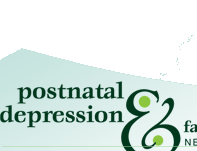
LITHIUM
This section is designed to inform professionals.
(Consumers, see Fact Sheet on Lithium)
Available as Lithium Carbonate, Lithicarb and Priadel.
- Used for prophylaxis of recurrent episodes of mania or depression
- Used for acute treatment of mania
- Used to augment (to increase effect) antidepressants in depression
- Used to reduce the suicide risk
- Considered as a treatment if two to three episodes of mania or depression have occurred in a 3-year period.
Use in Pregnancy
Category D
- As pregnancy progresses, renal Lithium excretion increases, which usually necessitates an increase in dose;
- Maternal toxicity is most likely to occur during the delivery & immediately afterwards.
- Women should have their Lithium level monitored every 2-4 weeks throughout pregnancy, weekly in the last month and every few days shortly before and after delivery.
- Initial studies showed risk of Ebstein’s anomaly (right ventricular hypoplasia and downward displacement of tricuspid valve) to be 400 times higher than baseline rate of 1/20.000 in patients with first trimester Lithium exposure. More recent studies suggest a real, but more modest, teratogenic risk of Ebstein’s anomaly following first-trimester Lithium exposure: 1/1000(0.1%) and 1/2000 (0.05%) birth; absolute risk small (0.05%-0.1%). Lithium remains the safest mood stabilizer during pregnancy.
- Risks and benefits of either discontinuation, (only first trimester discontinuation and thereafter reintroduction of Lithium) or continuation of Lithium treatment throughout pregnancy have to be carefully evaluated. This will depend on preference of the woman and severity of her illness. A relapse of a more severe illness may pose greater risk than being on Lithium.
- In case of first trimester exposure, anomalies can be identified by prenatal screening with a high-resolution ultrasound examination and foetal echocardiography at 16-18 weeks gestation and a referral to a neonatal paediatrician considered.
- Reintroduction of Lithium after the first trimester is not associated with increased malformations.
- Exposure in later pregnancy may cause neonatal toxicity (muscular hypotonia with impaired breathing and cyanosis- also called “floppy baby syndrome”), some cases of neonatal hypothyroidism, nephrogenic diabetes insipidus, and polyhydramnios have been described.
- Some authors recommend discontinuing Lithium several days prior to delivery to minimize risk of neonatal toxicity or at least consider withholding lithium just prior to delivery.
- Women with only single episodes of illness may consider discontinuation of Lithium prior to conception with a tapering dose over ~10-14days suggested.
Use in Lactation
Category L4
- Baby has most likely already been exposed to mood stabilizer during pregnancy;
- Postpartum period does carry high risk of relapse of bipolar symptoms and changing from an effective medication to a new drug is not without risk; Lithium prophylaxis has been found to reduce the rate of relapse by up to 50%.
- There have been concerns that Lithium may be secreted at high levels in breast milk and infants may inefficiently clear Lithium, thereby increasing their risk of significant drug exposure and toxicity (evidence is limited.)
- No formal guidelines of postpartum blood monitoring available; One study(3) suggests to check renal and thyroid function of both mother and infant (should include infant serum Lithium levels and thyroid function, urea, creatinine- preferably in the immediate postpartum period up to 6 weeks of age; after that 8-12 weekly monitoring of the infants)
- Be aware of propensity of infant to rapid dehydration / febrile illness which can lead to elevated levels.
- Older case reports influenced recommendations; however they were often based on small number of case reports (16, 17, 18, 19, 20).
CLINICAL SCENARIO
A 32year old women presents for advice with regards to the treatment of her Bipolar illness. She has been recently accepted for fertility treatment. She is currently on Lithium 1200mg. The dose of her Lithium was reduced about 6 weeks ago and her antidepressant medication (Venlafaxine) was discontinued three month ago. She did describe a re-emergence of some mood instability (mostly mild depressive symptoms), especially over the past month. There also had been significant stress factors related to the fertility treatment, moving house and some financial problems.
She reports a clear history of depressive and hypomanic episodes, which have resulted in the past to financial problems, giving up jobs and marital problems. She has been on different antidepressants in the past but found her mood definitely stabilized when she was commenced on Lithium three years ago. She denied side effects with Lithium
She was reviewed together with her partner and they both were concerned about the implications of discontinuing Lithium. The patient is well educated about Lithium and is aware of some of the concerns associated with its use in pregnancy.
Perinatal Psychiatrist;
“We discussed the risks and benefits of discontinuation or continued treatment with Lithium. The more recent data suggest an only slightly increased risk of cardiac malformations if used during the first trimester.
The patient did not wish to breastfeed and therefore treatment with Lithium in the postnatal period was not an issue.
She decided to remain on Lithium until definitely pregnant and thereafter she was keen to attempt a slow reduction over 10 days and discontinue Lithium for the first trimester, if possible.
We decided that re-introduction of Lithium should be considered earlier should her mood deteriorate further especially given the recent mild changes in her mood.
We discussed the referral to a neonatal paediatrician for closer monitoring of the developing child.”
References
Many of the earlier studies were conducted with small samples and they are retrospective.
(1)Cohen LS et al. (1994) A re-evaluation of risk of in utero exposure to Lithium, JAMA 271: 146-15
(2)Groff PR,Robins W, Alda M, Berghoefer A, Vojtechovsky M, Nilsen A, and others. (2000). J Affective Disord, 31-9.
(3)Viguera AC, Cohen LS.(2002) Protective effect of pregnancy in women with Lithium-responsive bipolar Disorder. J Affective Disord.
(4)Viguera AC. (2000). Risk of recurrence of Bipolar Disorder in pregnant and non-pregnant women after discontinuation of Lithium maintenance treatment. Am J Psychiatry, 157: 179-84.
(5)Finnerty M. (1996). Acute manic episodes in pregnancy. Am J Psychiatry, 153: 261-3
(6).Baldessarini RJ. (1999).Effects of discontinuing Lithium maintenance treatment. Bipolar Disorders, 1:17-24)
(7).Schou M. (1976). What happened later to the Lithium babies? A follow-up of children born without malformations. Acta Psychiatr Scand, 54:193-7..
(8)Viguera A.C. (2001). Neurobehavioural outcome following Lithium exposure: what happens to Lithium babies. American Psychiatric Association. New Orleans (LA).
(9). Chahira Kozma. (2005). Neonatal Toxicity and transient neurodevelopmental deficits following prenatal exposure to Lithium: Another clinical report and a review of the literature. American Journal of Medical Genetics, 132A: 441-444.
(10).Yonkers AK et al. (2004). Management of BD during pregnancy and the postpartum period. Am J Psychiatry, 161:608-620.
(11). Newport DJ et al. (2005). Lithium placental passage and obstetrical outcome: Implications for clinical management during late pregnancy. Am J Psychiatry 162:2162-2170.
(12). Schou M. Treating recurrent affective disorders during and after pregnancy. Drug Safety 1998 Feb: 18(2): 143-152
(13). Kallen B. Lithium therapy and congenital malformations. Weinheim, Germany: VCH Verlagsgesellschaft: 1991:121-130.
(14). Czeizel A. Evaluation of drug intake during pregnancy in the Hungarian case-control surveillance of congenital anomalies. Teratology 1990:42:505-512.
(15). Jacobsen SJ et al. Prospective multi-centre study of pregnancy outcome after Lithium exposure during first trimester, Lancet 339(1992), pp.530-533.
(16).Sykes PA et al. Lithium carbonate and breast feeding. BMJ 1976; 2:1299.
(17).Tunnessen Jr. Toxic effects of Lithium in newborn infants: a commentary. J Pediatr 1972; 81:804-7.
(18).Schou M et al. Lithium and pregnancy. Hazards to women given Lithium during pregnancy and delivery. BMJ 1973; 2:137-8. /
(19).Fries H. Lithium in pregnancy. Lancet 1970; 1:1233.
(20).Schou M et al. Lithium and pregnancy: Lithium ingestion by children breastfed by women on Lithium treatment. BMJ 1973; 2:138.
(21).Weinstein MR et al. Lithium carbonate treatment during pregnancy; report of a case. Dis Nerv Syst 1969; 30:828-32
(22)Viguera AC et al. Lithium in breast milk and nursing infants: clinical implications. Am J Psychiatry 164:342-345, Feb 2007.
(23) Moretti ME et al. (2003). Monitoring Lithium in breast milk: An individualized approach for breastfeeding mothers. Therapeutic Drug Monitoring Lippincott Williams &Wilkins, Inc. volume 25(3): 364-366.
(24).Stewart DE et al. (1991) Prophylactic Lithium in Puerperal psychosis: the experience of three centres. Br J Psychiatry; 158:393-397.
(25)Cohen LS et al. (1995) Postpartum prophylaxis for women with bipolar disorder. Am J Psychiatry; 152:1641-1645. This and the previous study found reduced relapse rates of patients while treated with Lithium
(27) Yoshida K et al. (1999) Psychotropic drugs in mothers’ milk: a comprehensive review of assay methods, pharmacokinetics and of safety of breastfeeding. Journal of Psychopharmacology 13(1): 64-30.
(28)Austin MPV, Mitchell PB. (1998) Use of psychotropic medications in breastfeeding women: acute and prophylactic treatment. Australian and New Zealand Journal of Psychiatry; 32:778-784.
|






